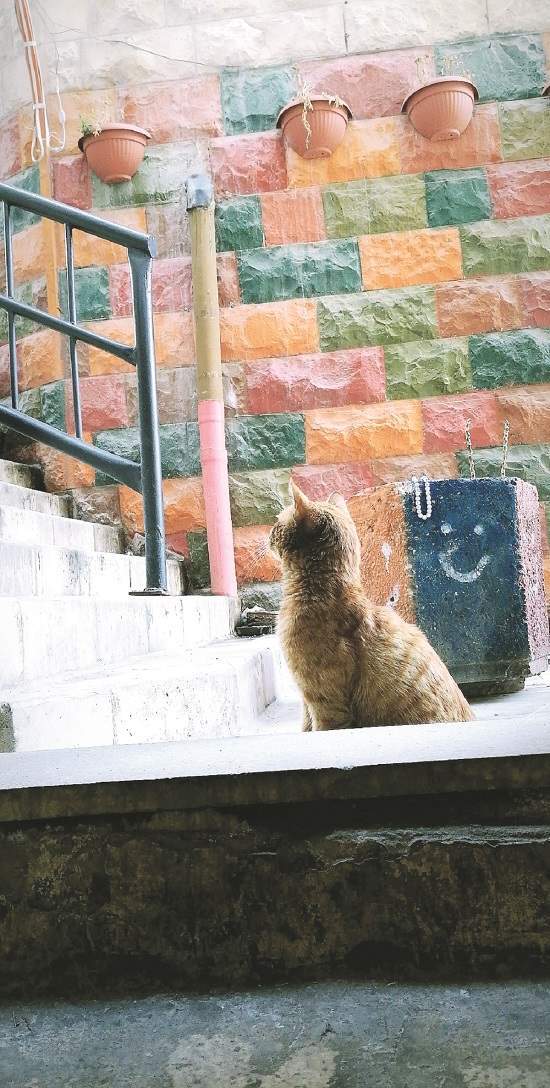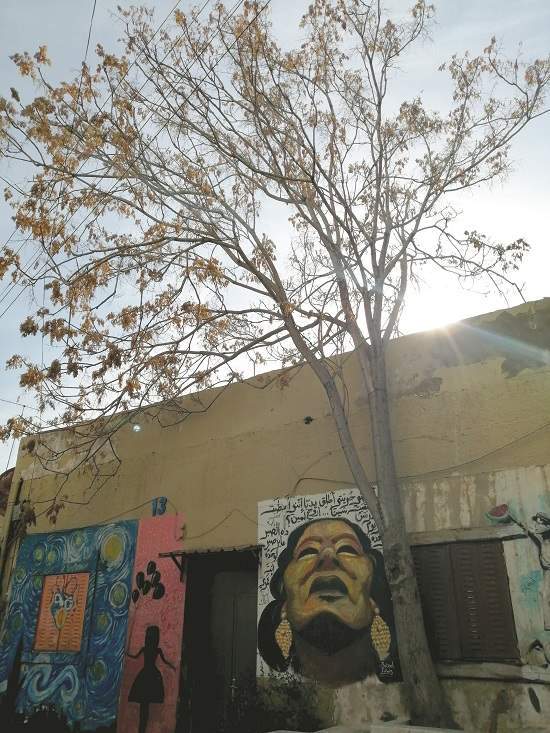AMMAN —
Amman, the city we know today, was once a village in the valley that expanded to cover the surrounding hills. The unique topography of the city created streets that are parallel to each other vertically and connected through public stairs, which play an interesting and dynamic role in the urban fabric.
اضافة اعلان
Organically erected, and other than aiding pedestrian movement, over time the stairs started to have a broader function.
Due to their familiarity to those who used them, people claimed these stairs as both a social and commercial public space.
The importance of the stairs comes from the importance of the streets they connect. There is a clear pattern. Main streets are connected through wider, longer, and busier stairs.
 It wasn’t until a few years ago that the Greater Amman Municipality and people began to see stairs like Al-Kalha as a destination rather than as just a pathway. (Teba Al-Bkirat/Jordan News)
It wasn’t until a few years ago that the Greater Amman Municipality and people began to see stairs like Al-Kalha as a destination rather than as just a pathway. (Teba Al-Bkirat/Jordan News)
Al-Kalha stairs might be Amman’s most popular stairs, connecting downtown Amman to
Jabal Luweibdeh, two of the busiest and most important areas in Amman.
The Al-Kalha stairs start at King Hussein Street and connect up to Nimr Al-Idwan Street at an elevation of 17 meters above the downtown area. It has exactly 112 steps.
The stairs date back to the 1920s, when they were known as Al-Manhal Stairs after a family that used to live in one of the houses built along the stairs. Later on in the 1930s, the stairs became known as Al-Kalha Stairs after Al-Kalha Restaurant which was located at the foot of the stairs.
Through the years, the stairs had along it a bakery, a newspaper office, and restaurants. Many shops came and went, but some of them lasted to this day and gained wide popularity for their location along the stairs.
Among the businesses located along the stairs are: the Riviera Hotel, one of Amman’s oldest and considered a very special place for a memorable stay, Abu Ahmad’s barbershop, Abu Ali Katayef, Café Zikrayat El Balad, which overlook the downtown, a DHL branch, and of course Jadal for Art and Culture, a public space where discussions, lectures, and events take place.
 It wasn’t until a few years ago that the Greater Amman Municipality and people began to see stairs like Al-Kalha as a destination rather than as just a pathway. (Teba Al-Bkirat/Jordan News)
It wasn’t until a few years ago that the Greater Amman Municipality and people began to see stairs like Al-Kalha as a destination rather than as just a pathway. (Teba Al-Bkirat/Jordan News)
It wasn’t until a few years ago that the Greater Amman Municipality turned its attention to these stairs and people began to see such stairs as a destination rather than as just a pathway leading to somewhere else. The stairs were renovated as a public space with lights, railings, benches, and any broken steps were fixed.
The renovation encouraged a number of local artists to start painting murals on the walls of buildings around the stairs, as well as paint the steps, which added an aesthetic touch and made it more inviting for people.
Today, Al-Kalha Stairs is a commercial, cultural, social, artistic, and touristic destination, full of street musicians and groups of friends gathering in summer nights.
Whether you decide to visit one of the shops or climb your way from downtown to Luweibdeh, it is always worth the climb.
Read more about Property



